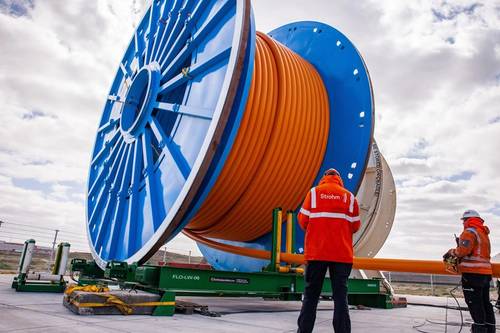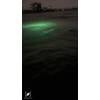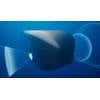Deepsea Mining First for Strohm TCP
A composite jumper designed and manufactured by Strohm (formerly known as Airborne Oil & Gas) will feature in deepsea mining technology being developed by offshore contractor Allseas to responsibly recover polymetallic nodules from the seabed at depths of 4,000 - 6,500m.
Key metals such as cobalt and nickel required for renewable energy technologies and electric vehicle batteries are in increasingly high demand as the world gets behind the energy transition. Allseas is developing a deepsea collection system to source nodule-rich minerals from the seafloor with minimum environmental impact.
This is the first time Strohm’s Thermoplastic Composite Pipe (TCP) solution will be used in a deepsea mining application. Under the agreement, the world’s leading manufacturer of this technology will provide Allseas with a spoolable TCP Jumper to connect the seabed vehicle to the vertical transport system.
According to the manufacturer, TCP is 80% lighter in weight compared to its metallic equivalents reducing the need for buoyancy, which is an important benefit for deepsea mining activities. Manufactured at its 24/7 facility in The Netherlands and delivered in long spoolable lengths, TCP is fitted with an abrasion resistant liner which provides a distinct advantage over short, flanged rubber-based pipes typically deployed for slurry transport operations. The jumper’s inner bore is also extremely smooth, and its strong composite wall provides good collapse resistance while maintaining sufficient flexibility.
“For this project, TCP’s lower carbon credentials are in tandem with the overarching strategy to impose minimum impact on the environment. Our technology is proven to reduce the CO2 footprint of pipeline infrastructures by more than 50% and is completely impervious to corrosion making it a sustainable solution with a long lifecycle," said Oliver Kassam, CEO, Strohm. "TCP was first implemented by the oil and gas sector in 2007, and we have enjoyed zero failures to date making it an extremely reliable technology; it is also completely recyclable.”
Strohm is currently developing its technology for offshore wind, hydrogen, and carbon capture, utilization and storage (CCUS) applications.














 December 2025
December 2025



